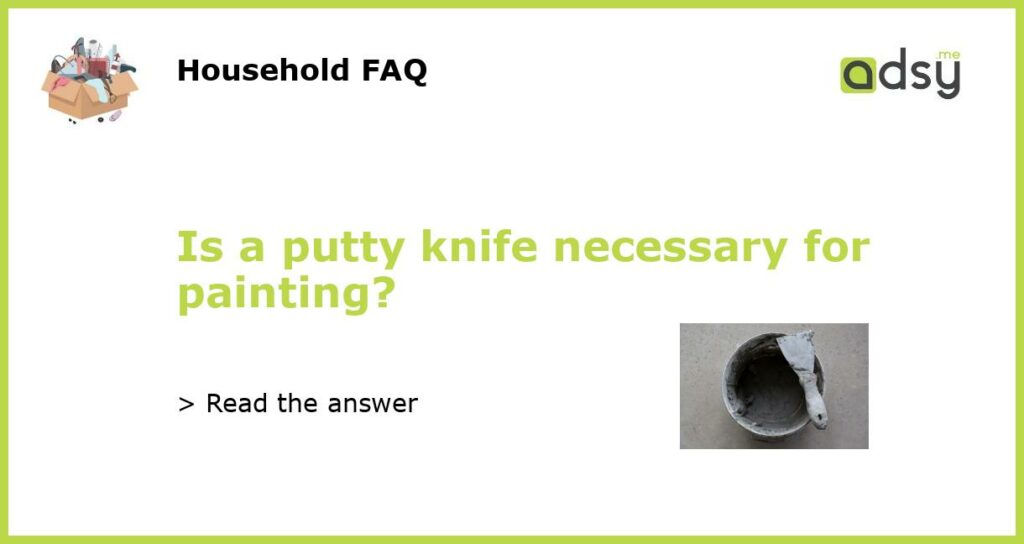Yes, a Putty Knife is Necessary for Painting – Here’s Why
If you’ve ever embarked on a painting project, you may have wondered if using a putty knife is actually necessary. While it might seem like an optional tool, a putty knife is actually an essential tool for any painting job. Whether you are painting walls, ceilings, furniture, or any other surface, a putty knife can make all the difference in achieving a professional and flawless finish. In this article, we will explore the reasons why a putty knife is necessary for painting.
Preparing the Surface
Before starting any painting project, it’s crucial to properly prepare the surface you will be painting. A putty knife plays a vital role in this preparation phase. It can be used to scrape and remove any loose paint, dirt, or debris from the surface. By doing so, you will create a clean and smooth canvas for the new paint to adhere to. Without this step, the new paint may not adhere properly, resulting in a patchy and uneven finish.
Repairing Imperfections
One of the main purposes of a putty knife is to repair imperfections on the surface you are painting. Whether it’s dents, dings, cracks, or holes, a putty knife combined with a suitable filler, such as spackle or joint compound, can easily fix these issues. By filling in these imperfections and ensuring a smooth surface, you will create a seamless base for your paint. This step is especially important when painting walls, as it will result in a flawless and professional-looking finish.
Applying and Spreading Filler
In addition to repairing imperfections, a putty knife is also used to apply and spread filler. When working on a painting project, you may need to fill in small gaps or seams, such as those around trim or baseboards. A putty knife allows you to spread the filler evenly and smoothly, ensuring a seamless transition between different surfaces. This step is crucial for achieving a clean and professional look, as any unevenness or gaps will be noticeable once the paint is applied.
Smoothing and Leveling Surfaces
After applying filler, a putty knife can be used to smooth and level the surface. This is particularly important when repairing larger imperfections, such as significant dents or holes. By using the edge of the putty knife, you can gently scrape and level the filler to match the surrounding surface. This process ensures that the repaired area blends seamlessly with the rest of the surface, creating a smooth and consistent finish. Without a putty knife, achieving this level of precision would be challenging.
Cleaning and Maintenance
Finally, a putty knife is also useful for cleaning and maintaining your painting tools. After completing a painting project, you can use a putty knife to scrape any excess paint or debris off your brushes or rollers. This helps prolong the lifespan of your tools and ensures they are ready for your next project. Additionally, a putty knife can also be used to remove dried or stubborn paint from surfaces, such as windows or floors. This versatility makes a putty knife a valuable tool to have in your painting toolkit.






